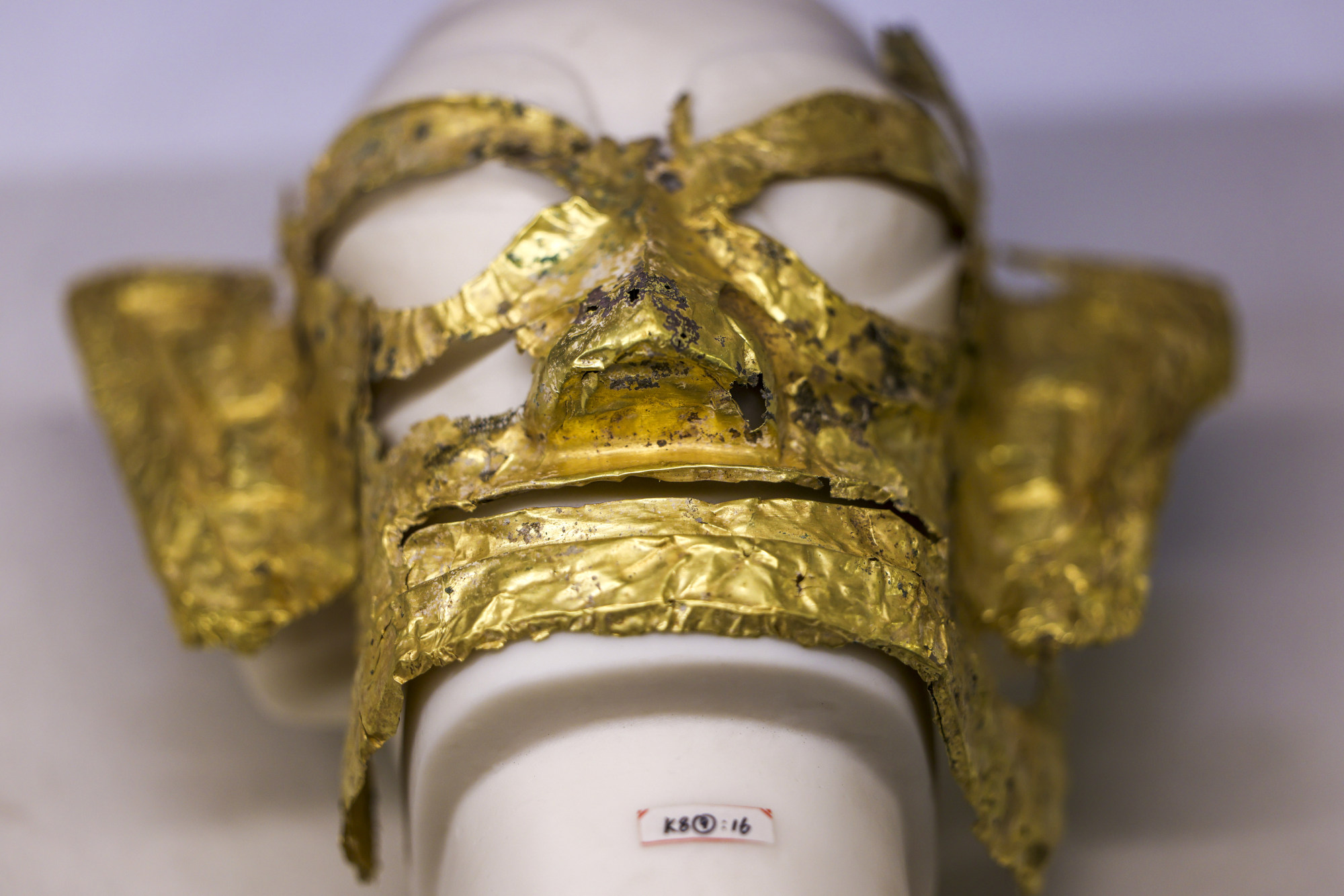A gigantic bronze mask, a statue of a mythical creature, a dragon-shaped object and a gold face-covering are among 120 national treasures set to be shown in Hong Kong, after being unearthed recently at an archaeological site in mainland China.
Hong Kong Palace Museum on Wednesday provided details of the show titled “Gazing at Sanxingdui: new archaeological discoveries in Sichuan”, which will run for 3½ months from September 27 this year to January 8, 2024, marking also the National Day celebrations on October 1.

The 120 artefacts comprise bronze, jade, gold and pottery objects dating as far back as 4,500 years, among mostly new discoveries at the Sanxingdui archaeological site in the city of Guanghan in Sichuan province. The finds have been shrouded in mystery as no language has been identified on the artefacts and no other discoveries have looked similar.
Do you have questions about the biggest topics and trends from around the world? Get the answers with SCMP Knowledge, our new platform of curated content with explainers, FAQs, analyses and infographics brought to you by our award-winning team.
One in every five artefacts to be shown in Hong Kong are deemed grade one national treasures, the highest rank afforded to such relics.
Archaeologists believe the relics belong to the Shu kingdom that arose during the Shang dynasty.
Nearly half of the artefacts to be shown at the museum were unearthed between 2020 and 2022, with most having never been shown outside the country.
Tang Fei, director of the show’s supporting organisation, Sichuan Provincial Institute of Cultural Relics and Archaeology, said: “The precious cultural relics unearthed from the Sanxingdui and Jinsha sites represent the splendour of the ancient Shu’s material and spiritual civilisation.
“These artefacts reflect the remarkable achievements of the civilisation that developed in the upper Yangtze River region before the Qin dynasty. The ancient Shu had close connections with civilisations in the Yellow River region and the middle and lower Yangtze River regions. This demonstrates ‘diversity in unity.”
Dr Louis Ng Chi-wa, director at the Hong Kong Palace Museum, said: “I sincerely hope this exhibition will appeal to visitors from Hong Kong, the mainland, and abroad, deepening their understanding of the formation and development of the 5,000-year Chinese civilisation, its continuity, inventiveness, unity, inclusiveness, and emphasis on peace and harmony, as well as its contributions to world civilisations.”

The exhibits will be on loan from the Sanxingdui Museum in Guanghan and Jinsha Site Museum in Chengdu.
Highlights of relics never before shown outside China include a bronze mask measuring 71cm (28 inches) tall, 131cm wide and 66cm deep, the largest of its kind discovered so far. The mask, weighing 65.5kg (144lbs), was estimated to date from between 1300 and 1100BC, during the Bronze Age.
Archaeologists said the way the ears were attached to the face required sophisticated handiwork given the size of the mask, which was unearthed in 2021.

Another exhibit is an eye-shaped plaque discovered in 2022, which archaeologists interpreted as meaning that people there considered eyes or the sun to be deities.
Different features are found on other life-size bronze heads, such as one with a blade on its back, which archaeologists said could be a hairstyle or an ornament as a symbol of identity or social status.
Many exhibits reflect the religious activities of the Shu kingdom. One of them, a statue of a mythical four-legged creature with rabbit-like ears and a thick tail, could have been used for worship as it was excavated from a site where sacrifices took place.

Eighteen of the 120 artefacts, mainly gold ones, will come from Jinsha Site Museum, including a mask.
Admission to the exhibition will be HK$150 (US$19) per adult with concession tickets priced at HK$75. Ticket sales for visits in September and October will start at 10am on September 1.
More from South China Morning Post:
- Hong Kong Palace Museum to exhibit statues, masks from mystery ancient Chinese civilisation in autumn show
- Chinese archaeologists unearth biggest bronze beast from Sanxingdui ruins
For the latest news from the South China Morning Post download our mobile app. Copyright 2023.





